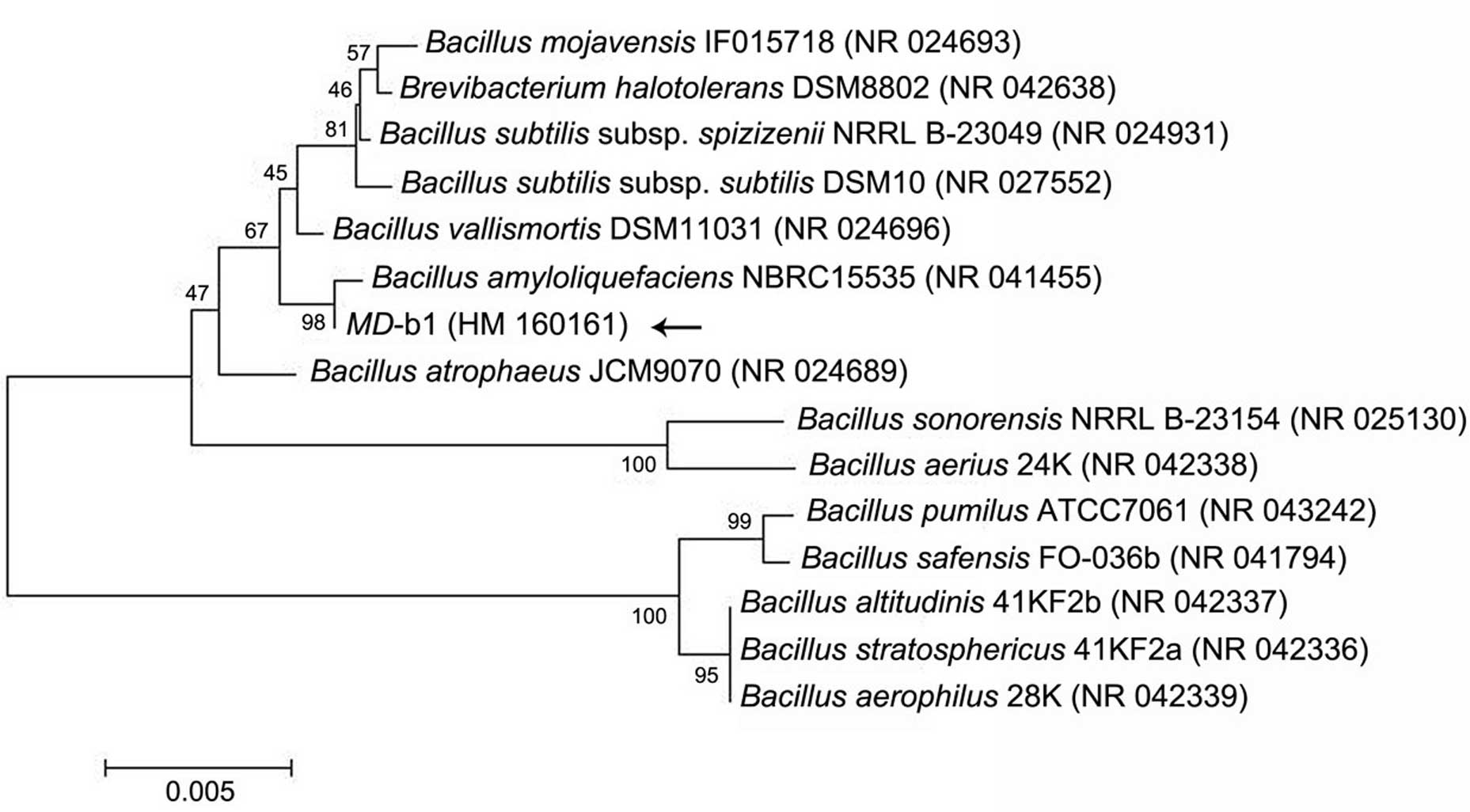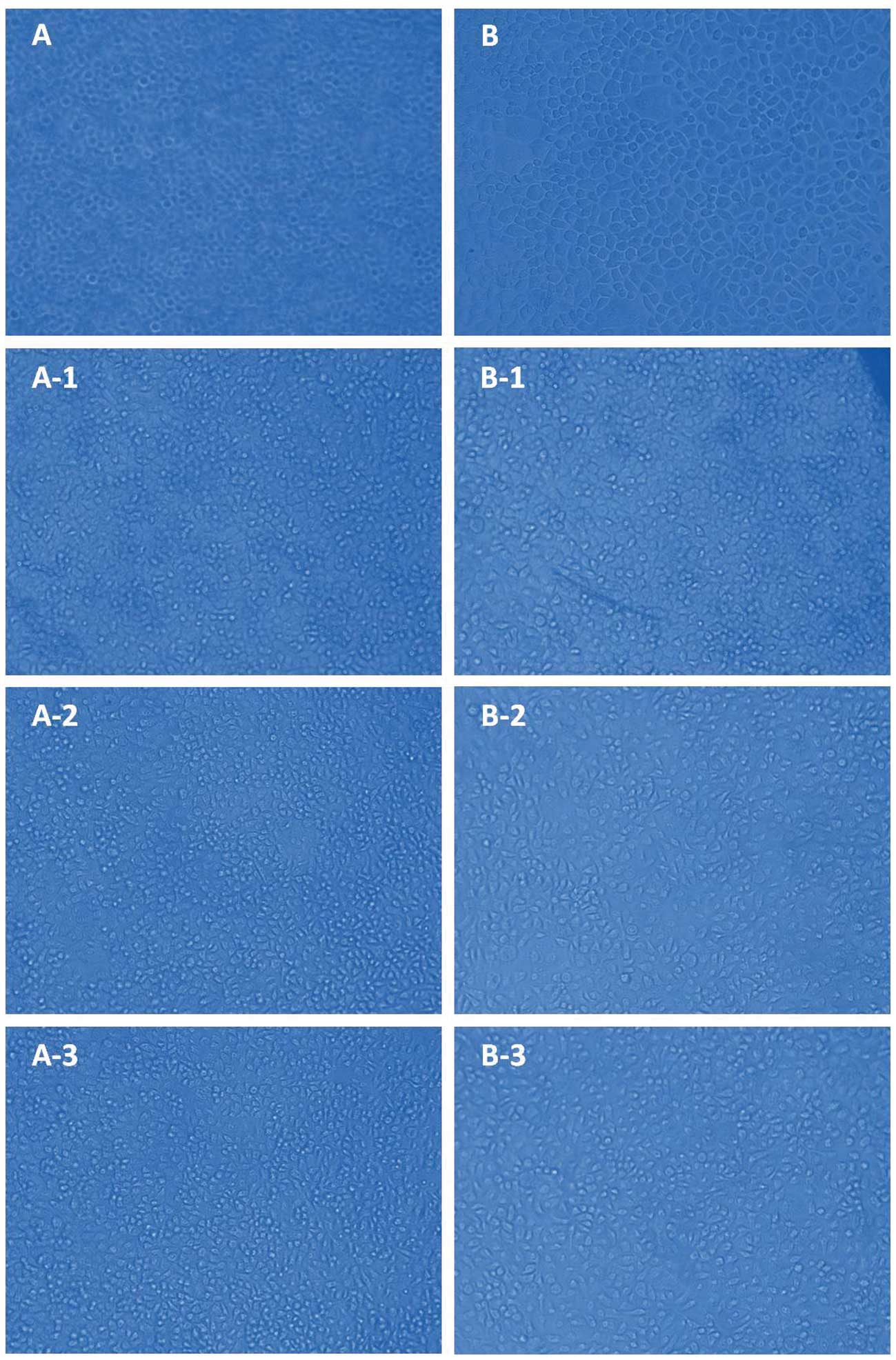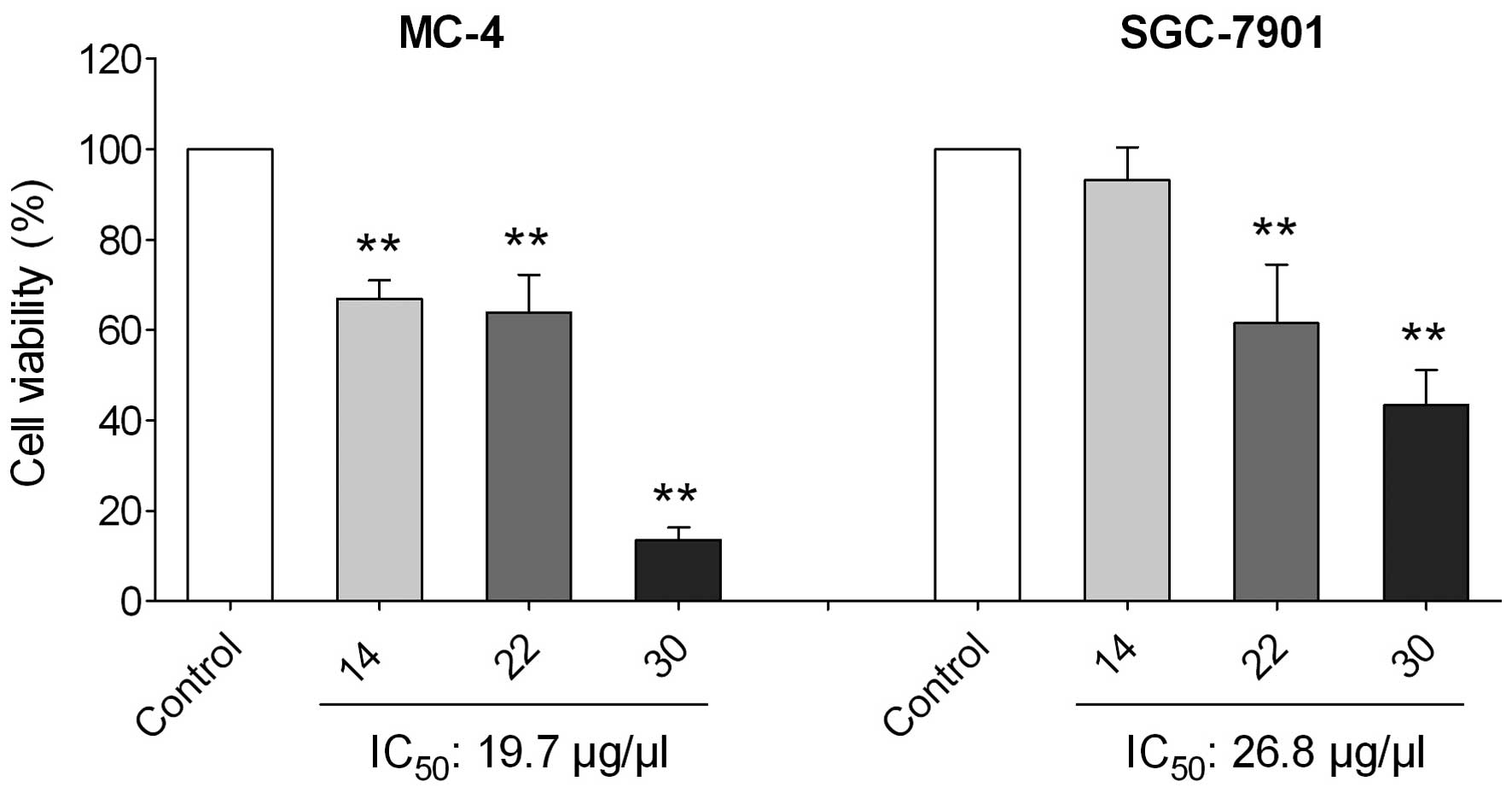|
1
|
GLOBOCAN 2008 (IARC): Section of Cancer
Information WHO. http://www.who.int/mediacentre/factsheets/fs297/en/
Accessed July 20, 2012.
|
|
2
|
Gutierrez RM, Gonzalez AM and Ramirez AM:
Compounds derived from endophytes: a review of phytochemistry and
pharmacology. Curr Med Chem. 19:2992–3030. 2012. View Article : Google Scholar : PubMed/NCBI
|
|
3
|
Igarashi Y, Trujillo ME, Martínez-Molina
E, Yanase S, Miyanaga S, Obata T, Sakurai H, Saiki I, Fujita T and
Furumai T: Antitumor anthraquinones from an endophytic actinomycete
Micromonospora lupine sp, nov. Bioorg Med Chem Lett.
17:3702–3705. 2007. View Article : Google Scholar : PubMed/NCBI
|
|
4
|
Taechowisan TC, Lu CH, Shen YM and Lumyong
S: Antitumor activity of 4-Arylcoumarins from endophytic
Streptomyces aureofaciens CMUAc130. J Cancer Res Ther.
3:86–91. 2007. View Article : Google Scholar
|
|
5
|
Blunt JW, Copp BR, Hu WP, Munro MH,
Northcote PT and Prinsep MR: Marine natural products. Nat Prod Rep.
25:35–94. 2008. View
Article : Google Scholar
|
|
6
|
Hallmann J, Quadt-Hallmann A, Mahaffee WF
and Kloepper JW: Bacterial endophytes in agricultural crops. Can J
Microbiol. 43:895–914. 1997. View
Article : Google Scholar
|
|
7
|
Kobayashi DY and Palumbo JD: Bacterial
endophytes and their effects on plants and uses in agriculture.
Microbial Endophytes. Bacon CW and White JF Jr: Marcel Dekker; NY,
New York: pp. 199–233. 2000
|
|
8
|
Zinniel DK, Lambrecht P, Harris NB, Feng
Z, Kuczmarski D, Higley P, Ishmaru CA, Arunakumari A, Barletta RG
and Vidaver AK: Isolation and characterization of endophytic
colonizing bacteria from agronomic crops and prairie plants. Appl
Environ Microbiol. 68:2198–2208. 2002. View Article : Google Scholar : PubMed/NCBI
|
|
9
|
Azevedo JL, Maccheroni W Jr, Pereira JO
and Araújo WL: Endophytic microorganisms: a review on insect
control and recent advances on tropical plants. Electron J
Biotechnol. 3:e1–e4. 2000. View Article : Google Scholar
|
|
10
|
Sturz AV and Nowak J: Endophytic
communities of Rhizobacteria and the strategies required to create
yield enhancing associations with crops. Appl Soil Ecol.
15:183–190. 2000. View Article : Google Scholar
|
|
11
|
Lodewyck C, Vangronsveld J, Porteous F,
Moore ERB, Taghavi S, Mezgeay M and van der Lelie D: Endophytic
bacteria and their potential application. Crit Rev Plant Sci.
86:583–606. 2002. View Article : Google Scholar
|
|
12
|
Mundt JO and Hinkle NF: Bacteria within
ovules and seeds. Appl Environ Microbiol. 32:694–698.
1976.PubMed/NCBI
|
|
13
|
McInroy JA and Kloepper JW: Population
dynamics of endophytic bacteria in field-grown sweet corn and
cotton. Can J Microbiol. 41:895–901. 1995. View Article : Google Scholar
|
|
14
|
Cho KM, Hong SY, Lee SM, Kim YH, Kahng GG,
Lim YP, Kim H and Yun HD: Endophytic bacterial communities in
ginseng and their antifungal activity against pathogens. Microbial
Ecol. 54:341–351. 2007. View Article : Google Scholar : PubMed/NCBI
|
|
15
|
Tiwari R, Kalra A, Darokar MP, Chandra M,
Aggarwal N, Singh AK and Khanuja SP: Endohytic bacteria from
Ocimum sanctum and their yield enchancing capabilities. Curr
Micobiol. 60:167–171. 2010.
|
|
16
|
Vendan RT, Yu YJ, Lee SH and Rhee YH:
Diversity of endophytic bacteria in ginseng and their potential for
plant growth promotion. J Microbiol. 48:559–565. 2010. View Article : Google Scholar : PubMed/NCBI
|
|
17
|
Yu BY and Xu GJ: Studies on resource
utilization of Chinese drug Dwarf lilyturf (Ophiopogon
japonicus). J Chin Herbs. 26:205–210. 1995.
|
|
18
|
Xiao PG: Modern Chinese Materia Medica.
Chemical Indestry Press; Beijing: pp. 772002
|
|
19
|
Kou J, Yu B and Xu Q: Inhibitory effects
of ethanol extract from Radix Ophiopogon japonicus on venous
thrombosis linked with its endothelium-protective and anti-adhesive
activities. Vascul Pharmacol. 43:157–163. 2005.PubMed/NCBI
|
|
20
|
Zhou YF, Qi J, Zhu DN and Yu BY: Two new
steroidal glycosides from Ophiopogon japonicus. Chin Chem
Lett. 19:1086–1088. 2008. View Article : Google Scholar
|
|
21
|
China Pharmacopoeia Committee:
Pharmacopoeia of the People’s Republic of China. China Chemical
Industry Press; I. Beijing, China: 64. 2010
|
|
22
|
Kou J, Sun Y, Lin Y, Cheng Z, Zheng W, Yu
B and Xu Q: Anti-inflammatory activities of aqueous extract from
Radix Ophiopogon japonicus and its two constituents. Biol
Pharm Bull. 28:1234–1238. 2005. View Article : Google Scholar : PubMed/NCBI
|
|
23
|
Lin X, Xu DS, Feng Y, Li SM, Lu ZL and
Shen L: Release-controlling absorption enhancement of enterally
administered Ophiopogon japonicus polysaccharide by sodium
caprate in rats. J Pharm Sci. 95:2534–2542. 2006. View Article : Google Scholar : PubMed/NCBI
|
|
24
|
Li N, Zhang JY, Zeng KW, Zhang L, Che YY
and Tu PF: Anti-inflammatory homoisoflavonoids from the tuberous
roots of Ophiopogon japonicus. Fitoterapia. 83:1042–1045.
2012. View Article : Google Scholar : PubMed/NCBI
|
|
25
|
Wang LY, Wang Y, Xu DS, Ruan KF and Wang
S: MDG-1, a polysaccharide from Ophiopogon japonicas exerts
hypoglycemic effects through the PI3K/Akt pathway in a diabetic
KKAy mouse model. J Ethnopharmacol. 143:347–354. 2012.PubMed/NCBI
|
|
{
label needed for ref[@id='b26-ol-05-06-1787']
}
|
[26] Koyama R,
Matsumoto A, Inahashi Y, Ōmura S and Takahashi Y: Isolation of
actinomycetes from the root of the plant, Ophiopogon
japonicus, and proposal of two new species, Actinoallomurus
liliacearum sp nov and Actinoallomurus vinaceus sp nov.
J Antibiot (Tokyo). 65:335–340. 2012.PubMed/NCBI
|
|
27
|
Rosenblueth M and Martinez-Romero E:
Rhizobium etli maize populations and their competitiveness
for root colonization. Arch Microbiol. 181:337–344. 2004.
View Article : Google Scholar
|
|
28
|
Chen YT, Ding LX, Cheng DQ, Ding ZS, Lin
MA and Pan PL: Isolation and identification of endofungi from
Liriope spicata. J Laiyang Agri Col (Nat Sci). 23:13–16.
2006.(In Chinese).
|
|
29
|
Miller KI, Qing C, Sze DM and Neilan BA:
Investigation of the biosynthetic potential of endophytes in
traditional Chinese anticancer herbs. PLoS One. 7:e359532012.
View Article : Google Scholar : PubMed/NCBI
|
|
30
|
Rosenblueth M and Martínez-Romero E:
Bacterial endophytes and their interactions with hosts. Mol Plant
Microbe Interact. 19:827–837. 2006. View Article : Google Scholar : PubMed/NCBI
|
|
31
|
Compant S, Mitter B, Colli-Mull JG, Gangl
H and Sessitsch A: Endophytes of grapevine flowers, berries, and
seeds: identification of cultivable bacteria, comparison with other
plant parts, and visualization of niches of colonization. Microbial
Ecol. 62:188–197. 2011. View Article : Google Scholar
|
|
32
|
Bonmatin J, Laprévote O and Peypoux F:
Diversity among microbial cyclic lipopeptides: iturins and
surfactins. Activity-structure relationships to design new
bioactive agents. Comb Chem High Throughput Screen. 6:541–556.
2003. View Article : Google Scholar
|
|
33
|
Snook ME, Mitchell T, Hinton DM and Bacon
CW: Isolation and characterization of leu7-surfactin from the
endophytic bacterium Bacillus mojavensis RRC 101, a
biocontrol agent for Fusarium verticillioides. J Agric Food
Chem. 57:4287–4292. 2009. View Article : Google Scholar : PubMed/NCBI
|
|
34
|
Krishnan P, Bhat R, Kush A and Ravikumar
P: Isolation and functional characterization of bacterial
endophytes from Carica papaya fruits. J Appl Microbiol.
113:308–317. 2012. View Article : Google Scholar : PubMed/NCBI
|
|
35
|
Newman DJ and Cragg GM: Natural products
as sources of new drugs over the last 25 years. J Nat Prod.
70:461–477. 2007.PubMed/NCBI
|
|
36
|
Strobel G, Daisy B, Castillo U and Harper
J: Natural products from endophytic microorganisms. J Nat Prod.
67:257–268. 2004. View Article : Google Scholar : PubMed/NCBI
|
|
37
|
Yang MP, Wu H, Yin L, Zhang X and Duan JA:
Advances in research of saponins and polysaccharides in
Ophiopogonis japonicus. Chin Arch Trad Chin Med.
10:2169–2171. 2008.
|
|
38
|
Chen YT, Lu QY, Lin MA, Cheng DQ, Ding ZS
and Shan LT: A PVP-extract fungal protein of Omphalia
lapideacens and its antitumor activity on human gastric tumors
and normal cells. Oncol Rep. 26:1519–1526. 2011.PubMed/NCBI
|
|
39
|
Xia M, Huang R, Witt KL, Southall N,
Fostel J, Cho MH, Jadhav A, Smith CS, Inglese J, Portier CJ, Tice
RR and Austin CP: Compound cytotoxicity profiling using
quantitative high-throughput screening. Environ Health Perspect.
116:284–291. 2008. View Article : Google Scholar : PubMed/NCBI
|
|
40
|
Chiu TH, Lai WW, Hsia TC, Yang JS, Lai TY,
Wu PP, Ma CY, Yeh CC, Ho CC, Lu HF, Wood WG and Chung JG:
Aloe-emodin induces cell death through S-phase arrest and
caspase-dependent pathways in human tongue squamous cancer SCC-4
cells. Anticancer Res. 29:4503–4511. 2009.PubMed/NCBI
|
|
41
|
Zheng JY, Tao LY, Liang YJ, Chen LM, Mi
YJ, Zheng LS, Wang F, She ZG, Lin YC, To KK and Fu LW:
Anthracenedione derivatives as anticancer agents isolated from
secondary metabolites of the mangrove endophytic fungi. Mar Drugs.
8:1469–1481. 2010. View Article : Google Scholar : PubMed/NCBI
|
|
42
|
Tan RX and Zou WX: Endophytes: a rich
source of functional metabolites. Nat Prod Rep. 18:448–459.
2001.PubMed/NCBI
|
|
43
|
Thompson JD, Higgins DG and Gibson TJ:
CLUSTAL W: improving the sensitivity of progressive multiple
sequence alignment through sequence weighting, position-specific
gap penalties and weight matrix choice. Nucleic Acids Res.
22:4673–4680. 1994. View Article : Google Scholar
|
|
44
|
Thompson JD, Gibson TJ, PleWniak F,
Jeanmougin F and Higgins DG: The CLUSTAL_X windows interface:
flexible strategies for multiple sequence alignment aided by
quality analysis tools. Nucleic Acids Res. 25:4876–4882. 1997.
View Article : Google Scholar : PubMed/NCBI
|
|
45
|
Tamura K, Dudley J, Nei M and Kumar S:
MEGA4: Molecular Evolutionary Genetics Analysis (MEGA) software
version 4.0. Mol Biol Evol. 24:1596–1599. 2007. View Article : Google Scholar : PubMed/NCBI
|
|
46
|
Saitou N and Nei M: The neighbor-joining
method: a new method for reconstructing phylogenetic trees. Mol
Biol Evol. 4:406–425. 1987.PubMed/NCBI
|
|
47
|
Felsenstein J: Evolutionary trees from DNA
sequences: a maximum likelihood approach. J Mol Evol. 17:368–376.
1981. View Article : Google Scholar : PubMed/NCBI
|
|
48
|
Fitch WM: Toward defining the course of
evolution: minimum change for a specific tree topology. Syst Zool.
20:406–416. 1971. View Article : Google Scholar
|
|
49
|
Masuko T, Minami A, Iwasaki N, Majima T,
Nishimura S and Lee YC: Carbohydrate analysis by a phenol-sulfuric
acid method in microplate format. Anal Biochem. 339:69–72. 2005.
View Article : Google Scholar : PubMed/NCBI
|
|
50
|
Tang QY and Feng MG: DPS Data Processing
System: Experimental Design, Statistical Analysis, and Data Mining.
Science Press; Beijing: pp. 146–164. 2007
|














